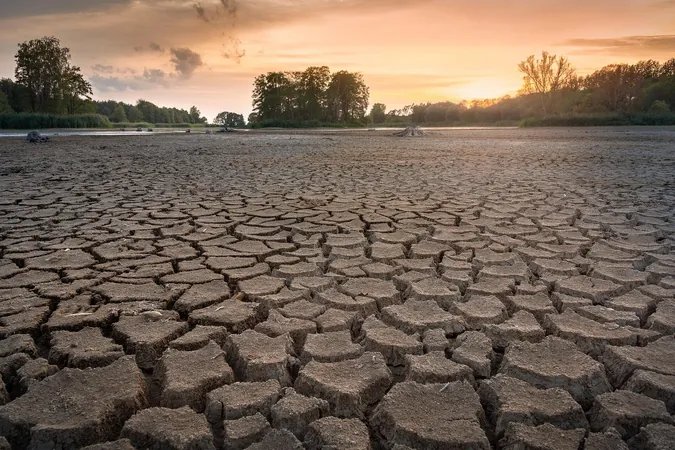
Drought Crisis: How Extreme Weather is Shaking Up Grassland Ecosystems
2025-05-27
Author: Mei
Grasslands Under Siege: The Drought Impact
A groundbreaking study published in *Ecology Letters* highlights the alarming effects of extreme drought on grassland ecosystems, shedding light on how these conditions disrupt the stability of plant productivity.
The Researchers' Revelations
Researchers from the Institute of Applied Ecology at the Chinese Academy of Sciences pinpoint that severe and persistent drought can significantly undermine the dominance of key grass species essential for consistent plant growth, leading to potentially dire consequences for grasslands worldwide.
Grasslands: Earth's Carbon Guardians
Covering about 40% of the Earth's surface, grasslands are crucial for maintaining global carbon balance and supporting livestock agriculture. While previous studies have established that drought impacts grassland productivity—essentially the rate at which biomass is produced—the mechanisms driving these changes were largely shrouded in mystery.
Unraveling the Mystery: A Long-Term Drought Experiment
To bring clarity to this issue, Dr. Luo Wentao and a team of researchers conducted a long-term drought experiment using rain shelters that reduced rainfall by a staggering 66% during the growing season. This rigorous analysis examined community-weighted functional traits and species asynchrony to gauge the drought’s implications on grassland productivity and stability.
The Dominance Shift: A Surprising Outcome
Under typical conditions, dominant grass species—those contributing the most biomass—play a pivotal role in maintaining grassland productivity by ensuring year-to-year ecosystem stability. However, prolonged drought alters this dynamic: as dominant species struggle, the variability in growth among diverse plants becomes crucial, with some flourishing while others falter, providing a necessary buffer against ecosystem fluctuations.
Rethinking Ecological Theory
This paradigm shift challenges long-held ecological theories that prioritize dominant species as the backbone of ecosystem functioning. The study unveils that certain trait combinations—such as a high specific leaf area for rapid growth and a dense tissue structure for better water retention—can enhance a plant community’s resilience to drought.
Towards Restoration: Practical Implications
These findings pave the way for informed strategies aimed at restoring degraded grasslands and selecting drought-resistant species, ensuring these critical ecosystems can withstand the challenges posed by climate change.




 Brasil (PT)
Brasil (PT)
 Canada (EN)
Canada (EN)
 Chile (ES)
Chile (ES)
 Česko (CS)
Česko (CS)
 대한민국 (KO)
대한민국 (KO)
 España (ES)
España (ES)
 France (FR)
France (FR)
 Hong Kong (EN)
Hong Kong (EN)
 Italia (IT)
Italia (IT)
 日本 (JA)
日本 (JA)
 Magyarország (HU)
Magyarország (HU)
 Norge (NO)
Norge (NO)
 Polska (PL)
Polska (PL)
 Schweiz (DE)
Schweiz (DE)
 Singapore (EN)
Singapore (EN)
 Sverige (SV)
Sverige (SV)
 Suomi (FI)
Suomi (FI)
 Türkiye (TR)
Türkiye (TR)
 الإمارات العربية المتحدة (AR)
الإمارات العربية المتحدة (AR)